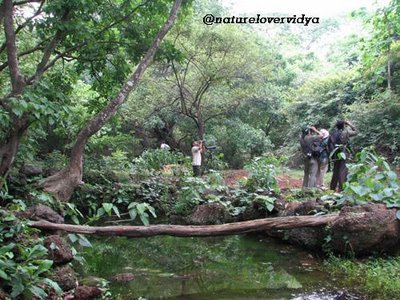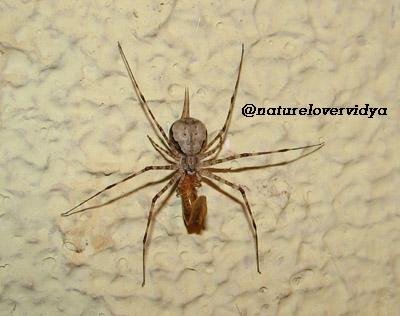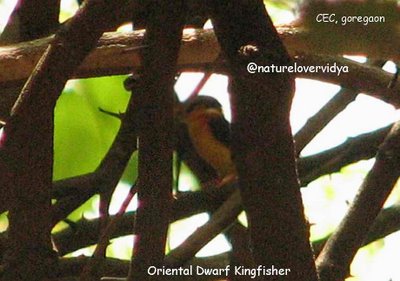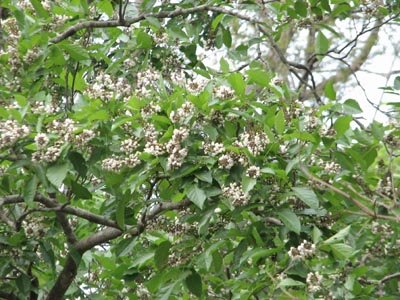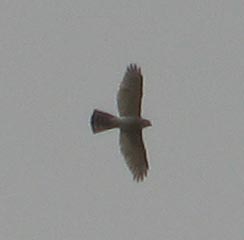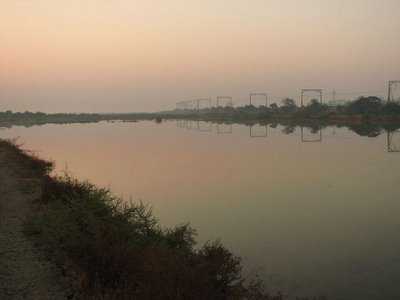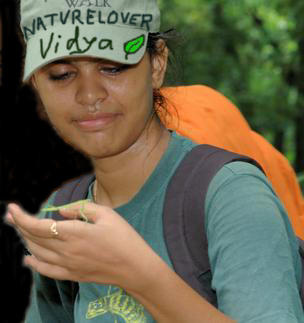Mangroves have always fascinated me from the day i have started knowing about them. I am quite passionate about the enchanting world of mangroves though i have hardly been regular in going to visit them. After long time i got to go on a trail specially meant for MANGROVES. Nevertherless i have been seeing them whenever i went to any wetland habitat for birding.... THis trail was organised by me for the BNHS NORTH MUMBAI GROUP on 5th Feb to commemorate WORLD WETLAND DAY which was on 2nd of february. I along with Mr. Paralkar lead the trail with an aim to promote the importance of mangroves. We were apporx 14 of us. Though the trail was scheduled at 8.00 am, i along with a friend went on the trail at 7 am so as to scan the area and present the best to the people. Doing so we got to see the sun rising and great SUNRISE shots.... THe whole area was bathed in pinkish orange and to go along with it was the pale still purplish water body. Walking along we were looking for subjects of importance for the trail. Apart frm the beautiful morning and sun rise the other things that enthralled as totally was an forest calotes. We found him on a the same branch aft the an hour when i came back again with the group. LAZY FELLOW. We walked for half hour clicking panoromic shots as that was the only thing possible due to bad light. We returned back to find the group assembled. After a brief introduction and a small talk by me on the aim of the trail we started off. I intially stressed more on plants, talking about mangroves and their uses. Slowly we also started talking of other aspects like birds and lizards, insects, etc. We talked about Avicennia marina var marina, Avicennia officinalis. I wil make a brief mention in my list at the end. The activity of the ashy prinia was worth noticing. They were busy jumping around, chirping loudly and showing off their tail proudly.. We walked discussin on Mangroves in details. We had to cross a bridge which connects the small outlet of the thane creek along whose shores lay the beautiful mangroves. From the bridge we saw the Pond heron waiting patiently for its prey absolutely still, a small blue kingfisher who sat on a branch for a while, a green sandpiper, and pied starlings at an distance. Turning to the path parallel to the creek we saw our first mangrove plant flowering. Its the Mangrove apple tree or Sonnertia apetala . On the same tree we saw a climber which is an mangrove associate called as Derris trifoliata. We walked along for some more time. We saw the juvenile of preying mantis, White cheeked bulbul, Rosy pastors, on our way. THe day was turning terribly hot which made us wrap up the trial officially. I wanted to show the group one of the rare mangrove species which was on the Naigaon west. All agreed to it and we walked back to station to cross and go to west. While walkin along the salt pans we saw a beautil WESTERN REEF EGRET, solitary and roamin around hunting for food. We refreshed ourselves at one of my friend and also a participant of the trail Sharon's house. Aft a quick brunch we walked to the mangrove patch. Most of them refused to walk through. I agree on their part as it was filthy, smelly and dense patch. THerefore we were just 4 who finally went in. We got pictures and then turned back. One of the person accompanyin us was a Phd student in plant taxonomy and he was quite happy to see it.We were so lucky to get Rhizophora flowering and fruiting. ANother friend showed as one dead specimen of A beautiful baby russels viper. It was clearly killed. WAlkin back i got a great image of the Long tailed shrike as if posing for me. OVerall a great trip. To end it in a better note i got a lift in rickshaw by my friend till vasai which was a enjoyable ride by itself as passed through beautfil green patches.
ENJOY THE PICTURES!!!!!!!
THE EARLY MORNING VIEW. THE RAILWAY TRACK LIES ON THE RIGHT.
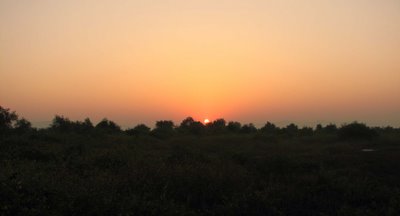
THE GLORIOUS SUNRISE
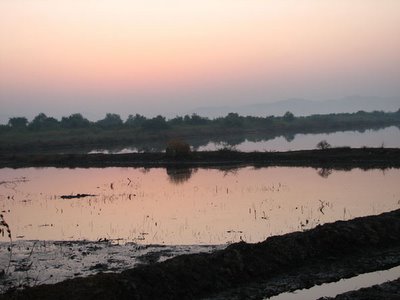
EARLY HOURS OF THE DAY IS AMAZING. tHE BEAUTY IS STUNNED AND STILL

vIEW FROM THE TOP OF THE BRIDGE IN MY 1ST ROUND WHICH WAS AT AROUND 7.AM
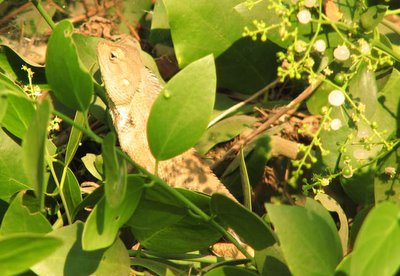
THE GARDEN LIZARD SUN BASKING.

thE SOLITARY BEAUTIFUL WESTERN REEF EGRET
 wESTERN REEF EGRET AGAIN!!
wESTERN REEF EGRET AGAIN!!

SOME KIND OF RESIONOUS EXUDATION FROM THE shirish PLANT

pREYING MANTIS WAS A ENCHANTING INSECT TO SEE

thE 1ST MANGROVE SPECIE WE SAW IN FLOWERING. Sonnertia apetala belonging to family Sonnertiaceae. Commonly called Mangrove apple! Long tailed shrike gave me an excellent pose. I love this bird!!!!!!!!!!!!!
Long tailed shrike gave me an excellent pose. I love this bird!!!!!!!!!!!!!  Same fellow on a bare twig. Loved taking his picture!
Same fellow on a bare twig. Loved taking his picture!

THE mighty SNAKE. ONE OF THE DEADLIEST VENOMOUS SNAKE COMMONLY FOUND IN MANGROVE AREAS- Russels Viper

THe beautiful Rosy starling . THey were found in abundance every year during winter. But this year they were quite less.
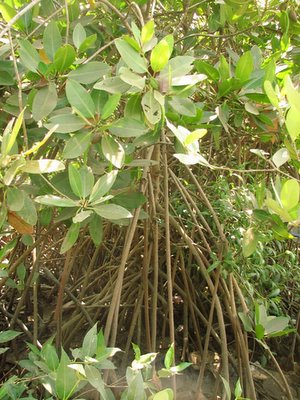 THe STILT ROOTS OF THE RED MANGROVES- Rhizophora mucronata /apiculata --need to confirm.
THe STILT ROOTS OF THE RED MANGROVES- Rhizophora mucronata /apiculata --need to confirm.
 THe LAZY Lizard. He was the same fellow who stayed on the same plant, same branch for more than hour after the time we had spotted him earlier.
THe LAZY Lizard. He was the same fellow who stayed on the same plant, same branch for more than hour after the time we had spotted him earlier.
 LOOK AT THE IRONY HERE.
LOOK AT THE IRONY HERE.
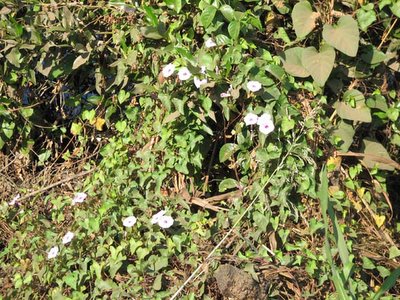 climBERS IN ASSOCIATION. SO MANY TOGETHER
climBERS IN ASSOCIATION. SO MANY TOGETHER
 tHE MANGROVE ASSOCIATE- Derris trifoliata. A climber with beautiful pink flowers belonging to family Fabaceae
tHE MANGROVE ASSOCIATE- Derris trifoliata. A climber with beautiful pink flowers belonging to family Fabaceae

Rhizophora flower buds
 Our birding area. THis is how it looked after the sun was completely out. In the picture u can see the Western reef egret and the Cormorant!!
Our birding area. THis is how it looked after the sun was completely out. In the picture u can see the Western reef egret and the Cormorant!!

Rhizophora fruits

HIGHLIGHTS OF THE DAY
Plants
1. Avicennia marina var. marina ( Grey Mangrove)
2. Avicennia officinalis (G M)
3. Salvadora persica ( Fruiting)( Seen gregariously and been liked by birds)
4. Derris trifoliata ( Beautiful pinkish flowers)
5. Sonnertia apetala ( Beautiful off white colored flower; flr without petal, with a umbrella shaped stigma and numerous anthers)
6. Acanthus ilicifolius ( Sea holly)
7. Exocaeria agallocha (Milky mangrove)
8. Sesuvium portula-castrum
9. Ziziphus jujuba (bor)
10. THespesia populnea
11. Clerodendron inerme
etc
Insects
1. Preying mantis
Butterflies---
2. Grass jewel
3. White orange tip
4. Salmon arab
Birds
1. White cheeked bulbul
2. Western reef egret
3. Rosy starling
4. Asian pied starling
5. Pond heron
6. Green sandpiper
7. Black kite
8. Ashy prinia
9. Little egret
10. Median egret
11. Common tailor bird.
12. Crow pheasant.
13. House sparrow.
14. House crow
15. Long tailed shrike
16. Small blue kingfisher
17. Greater cormorant
etc
MIsc
1. Garden lizard
2. Forest calotes
3. Russels viper (snake dead)
 Cistanche- A root parasitic plant.. It is seen growing below the Karvi Plants... Flowering seen In monsoon.. Belongs to the family Orobanchaceae or Broomrape Family.
Cistanche- A root parasitic plant.. It is seen growing below the Karvi Plants... Flowering seen In monsoon.. Belongs to the family Orobanchaceae or Broomrape Family. Commelina forskalaei- Commonly called Bearded Commelina...Belongs to the Spiderwort family known as Commelinaceae.. A monocot...
Commelina forskalaei- Commonly called Bearded Commelina...Belongs to the Spiderwort family known as Commelinaceae.. A monocot... Impatiens chinensis- Chinese balsam is its common name.. Again a regualr onsoon herb.. Belongs to the family Balsaminaceae...Beautiful tiny pink flowers are the wonder....!!!
Impatiens chinensis- Chinese balsam is its common name.. Again a regualr onsoon herb.. Belongs to the family Balsaminaceae...Beautiful tiny pink flowers are the wonder....!!! Brynea- A plant flowering in the months of June-July. Commonly called Cup and Saucer plant... The picture shows the opening of the fruit.. It belongs to the family Euphorbiaceae where there is a typical presence of Tricarpellary fruit tht can be seen here clearly...
Brynea- A plant flowering in the months of June-July. Commonly called Cup and Saucer plant... The picture shows the opening of the fruit.. It belongs to the family Euphorbiaceae where there is a typical presence of Tricarpellary fruit tht can be seen here clearly...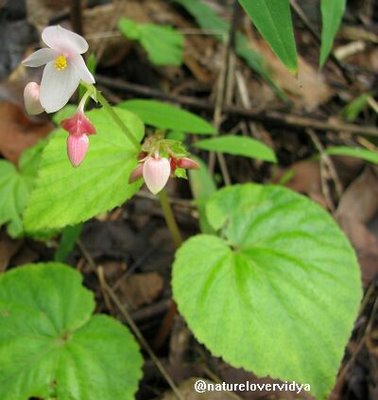 Begonia crenata - A monsoon plant growing on the elevated part of land or on slants...
Begonia crenata - A monsoon plant growing on the elevated part of land or on slants...




